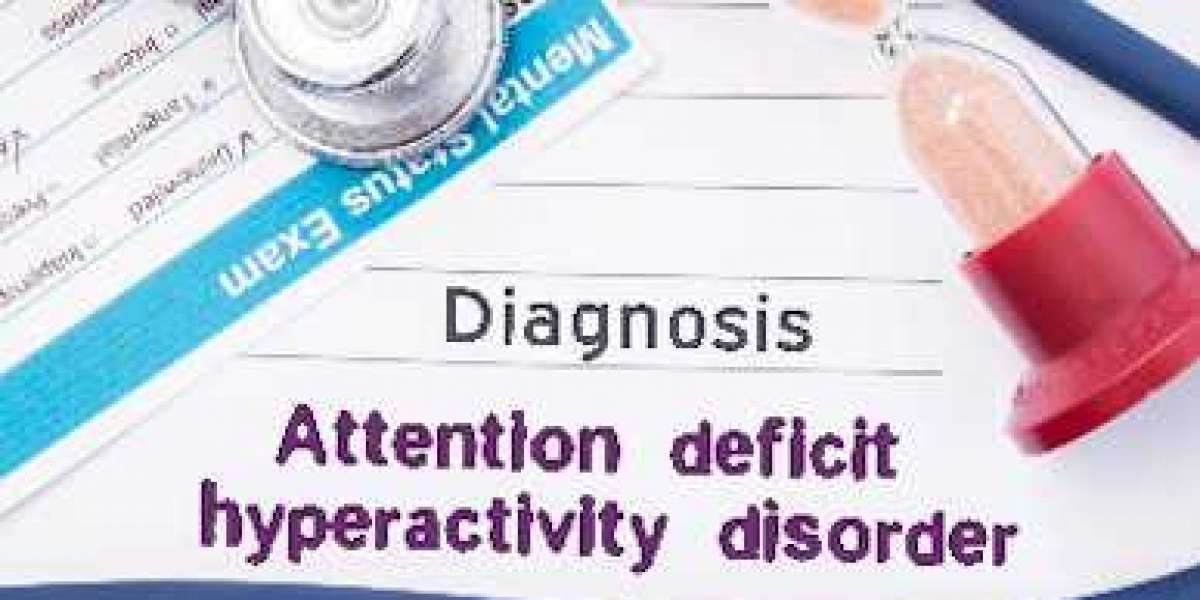First of all,
ADHD, or attention-deficit/hyperactivity disorder, is a multifaceted neurodevelopmental condition that is now being studied in a number of academic disciplines. This article takes the reader on a thorough exploration of the complex and multifaceted nature of ADHD, exploring its neurological roots, range of manifestations, and widespread effects on people of all ages. We seek to develop a thorough awareness of the difficulties posed by ADHD while navigating its complex terrain and investigating the various methods available for diagnosis, treatment, and support.
The ADHD's Neurobiology:
The intricate interaction of brain complexities, environmental circumstances, and hereditary predispositions is the basis of ADHD. ADHD is characterized by recurrent patterns of hyperactivity, impulsivity, and inattention. It is thought to be caused by dysregulation in brain circuits linked to important neurotransmitters, namely norepinephrine and dopamine. This neurological basis shapes the cognitive processes and behavioral responses of ADHD sufferers, greatly contributing to the fundamental symptoms that are seen in them.
ADHD Symptom Types and Their Expressions:
Since there is no one-size-fits-all way to classify ADHD, it is divided into three main subtypes: mixed presentation, hyperactive-impulsive presentation, and mostly inattentive presentation. While the primarily hyperactive-impulsive type is characterized by excessive fidgeting, hyperactivity, and trouble taking turns, the largely inattentive type struggles to maintain focus and organize work. The mixed presentation provides a complex and multifaceted picture of ADHD by combining symptoms of both hyperactivity and impulsivity with inattention.
ADHD Throughout Life:
Although ADHD is often thought of as a childhood condition, its effects persist throughout adulthood, posing particular difficulties at certain phases of life. Early life experiences can have an impact on social and academic functioning, which can result in underachievement in school and increased stress for the kid and their family. Academic environments, social interactions, and the development of executive functions continue to present obstacles for adolescents. Untreated or inadequately treated ADHD can have a negative impact on relationships, job paths, and general quality of life throughout adulthood, underscoring the necessity for ongoing diagnosis and treatment.
Effects on Social and Intellectual Functioning:
Children who struggle with ADHD have a tough time maintaining focus, finishing assignments, and organizing information, which makes them navigate a challenging academic environment. These difficulties lead to low academic performance, low self-esteem, and increased stress for the child and their parents. Social interactions are also impacted, since emotions of loneliness and peer pressure can result from impulsive behavior and a lack of social cue reading. It is essential to address the social and academic aspects of ADHD in order to create a supportive atmosphere and promote positive results.
Comorbidities Coexisting Conditions:
ADHD rarely occurs in a vacuum; rather, it usually coexists with other disorders, complicating both diagnosis and therapy. Learning difficulties, anxiety disorders, depression, and oppositional defiant disorder are examples of common comorbidities. In order to provide comprehensive and effective interventions that address the different requirements of persons with ADHD, it is imperative to untangle this complex web of coexisting illnesses.
Methods of treating ADHD:
To effectively manage ADHD, a multimodal strategy involving behavioral treatments, psychoeducation, and medication is required. Behavioral therapies, like social skills training and cognitive-behavioral therapy, focus on particular difficulties related to ADHD with the goal of fostering coping mechanisms. In order to improve comprehension and awareness of the disease, psychoeducation is essential for both individuals with ADHD and their families. To improve functional outcomes and reduce symptoms, doctors may give stimulants or non-stimulants. Treatment decisions are based on patient needs, preferences, and co-occurring conditions.
Difficulties in Diagnosing and Treating ADHD:
Despite advances in our understanding of ADHD, problems in its diagnosis and management still exist. The diagnostic process may be made more difficult by the subjective nature of symptom reporting, symptom overlap with other diseases, and the disorder's ongoing stigma. Overdiagnosis and overmedication concerns highlight the need for thorough evaluations that take into account each person's particular situation.
Adult ADHD:
In contrast to popular assumption, ADHD does not disappear over the adolescent and adult years. Even as adults, many people still struggle with the same symptoms, just in a different way. During adulthood, difficulties with executive functioning, time management, and organization may take precedence over overt hyperactivity. Untreated adult ADHD can affect relationships, job paths, and general life happiness. As a result, diagnosing and treating adult ADHD requires a paradigm shift.
The Support Systems' Function:
A strong support network is essential for people navigating the world of ADHD. Everyone who has an impact on the well-being of someone with ADHD, from employers and mental health experts to family and education, is crucial. Important aspects of assistance include implementing modifications in the workplace and classroom and fostering environments that encourage empathy, understanding, and appropriate coping skills.
The Beneficial Elements of ADHD
Despite the difficulties, it's important to acknowledge the strengths that people with ADHD have to offer. A unique viewpoint on problem-solving, creativity, and resilience are some of the attributes linked to ADHD. A more accepting and grateful view of ADHD is facilitated by creating an atmosphere that values and celebrates these abilities.
In summary:
With its complicated neurological origins and wide range of symptoms, ADHD creates a challenging and dynamic environment for people, families, and society as a whole. An all-encompassing and sophisticated strategy is more important than ever as our understanding of ADHD grows. The varied character of ADHD necessitates collaboration across disciplines and a dedication to developing environments that support the individual needs and strengths of those with the disorder. This includes early intervention in children and customized treatments for adolescents and adults. By reducing the complexities around ADHD, we may approach a more knowledgeable and compassionate viewpoint that acknowledges the potential and resiliency in each and every person impacted by this neurodevelopmental disorder.







